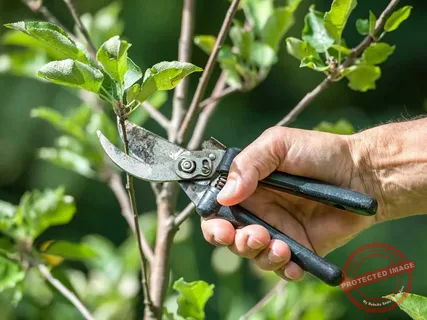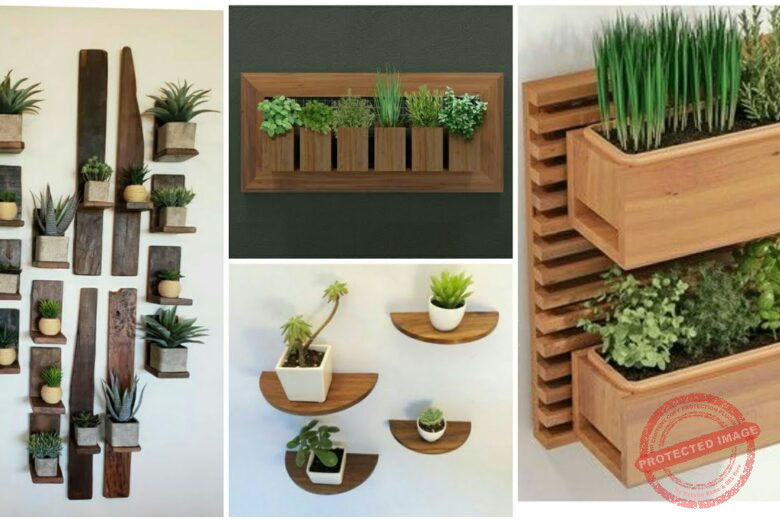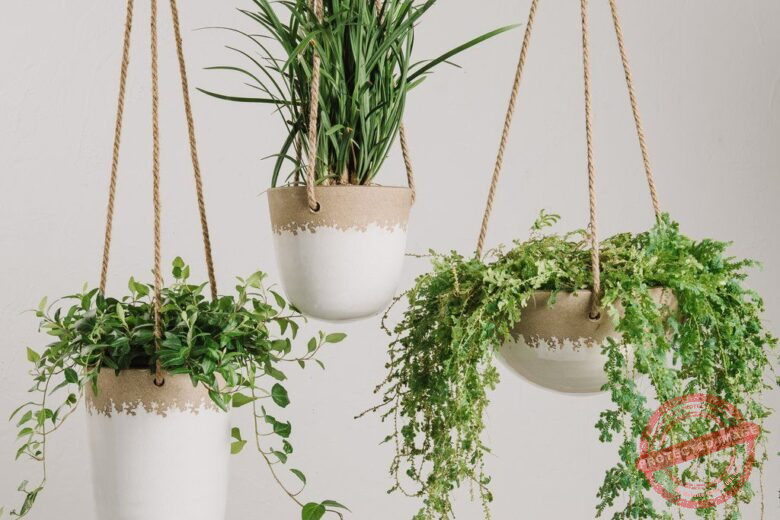Hydrangeas are beloved by gardeners for their lush foliage and stunning blooms that can range from blue to pink, purple, and white. However, it can be concerning to notice the leaves of your hydrangea turning yellow. Yellowing leaves can be a sign that something isn’t quite right with your plant, and understanding the underlying causes is crucial to restoring your hydrangea’s health. This article will delve into ten common reasons why hydrangea leaves turn yellow and provide actionable solutions to address each issue.
Gardening enthusiasts often encounter problems with their hydrangeas, but yellowing leaves are among the most perplexing and frequent issues. Whether you’re an experienced gardener or a novice, witnessing your hydrangea’s leaves turning yellow can be disheartening. However, with the right knowledge and care, this problem can often be resolved, ensuring that your hydrangeas continue to thrive and beautify your garden.
In this comprehensive guide, we will explore the various factors that can lead to yellowing leaves on hydrangeas. From nutrient deficiencies to pest infestations and improper watering, we will cover a range of potential causes. By understanding these issues and learning how to fix them, you can keep your hydrangeas healthy and vibrant all season long. So, let’s dive into the details and discover what might be affecting your hydrangeas and how you can address these problems effectively.
Nutrient Deficiency
One of the most common reasons for yellowing leaves in hydrangeas is a nutrient deficiency. Hydrangeas require a balanced supply of essential nutrients to maintain their lush green foliage. When key nutrients such as nitrogen, iron, or magnesium are lacking, the leaves may start to yellow. Nitrogen deficiency typically causes older leaves to turn yellow, while iron deficiency results in yellowing of young leaves with green veins, a condition known as chlorosis.
To fix this, you can start by testing your soil to determine which nutrients are lacking. Soil testing kits are readily available at garden centers and can provide valuable insights into your soil’s nutrient profile. Once you know what your soil needs, you can amend it with the appropriate fertilizers. For example, a high-nitrogen fertilizer can help address nitrogen deficiency, while chelated iron supplements can correct iron chlorosis. Additionally, incorporating organic matter such as compost into the soil can improve its overall fertility and nutrient-holding capacity.
Overwatering
Overwatering is another common cause of yellowing leaves in hydrangeas. These plants prefer well-drained soil and can suffer if their roots are constantly waterlogged. Overwatering can lead to root rot, a condition where the roots become damaged and unable to absorb nutrients effectively. This results in yellow leaves, wilting, and potentially the death of the plant if not addressed promptly.
To prevent overwatering, ensure that your hydrangea is planted in well-draining soil. If you notice yellowing leaves and suspect overwatering, check the soil moisture level by sticking your finger into the soil about an inch deep. If it feels soggy, reduce the frequency of watering. Allow the top inch of soil to dry out before watering again. Additionally, consider improving soil drainage by adding organic matter or creating raised beds to prevent water from pooling around the plant’s roots.
Underwatering
Conversely, underwatering can also cause hydrangea leaves to turn yellow. When hydrangeas do not receive enough water, they become stressed and their leaves may yellow and wilt. Hydrangeas have high water requirements, especially during hot, dry periods. It’s essential to provide consistent moisture to keep them healthy and vibrant.
To remedy underwatering, ensure your hydrangea receives adequate water, particularly during dry spells. A good rule of thumb is to water deeply once or twice a week, providing enough water to moisten the soil to a depth of at least 6 inches. Mulching around the base of the plant can help retain soil moisture and reduce evaporation. Organic mulches such as wood chips or straw are particularly effective in maintaining consistent soil moisture levels.
Poor Soil pH
Soil pH plays a crucial role in the health of hydrangeas. These plants prefer slightly acidic to neutral soil (pH 5.5 to 7). If the soil is too alkaline, hydrangeas may struggle to absorb essential nutrients, leading to yellowing leaves. This is particularly true for iron, which becomes less available in alkaline soils, resulting in chlorosis.
To address this issue, test your soil’s pH using a soil testing kit. If your soil is too alkaline, you can lower the pH by adding acidic amendments such as sulfur or peat moss. For more immediate results, you can use chelated iron foliar sprays to correct iron chlorosis directly on the leaves. Regularly monitoring and adjusting the soil pH can help prevent future nutrient uptake problems and keep your hydrangeas looking their best.
Pest Infestation
Pests can also cause hydrangea leaves to turn yellow. Common pests that affect hydrangeas include aphids, spider mites, and scale insects. These pests feed on the plant’s sap, weakening it and causing leaves to yellow, wilt, and drop prematurely. In severe infestations, the plant’s overall health can decline rapidly.
To manage pest infestations, regularly inspect your hydrangeas for signs of pests. Look for sticky residue, webbing, or the presence of insects on the leaves and stems. If you detect pests, you can start by spraying the plant with a strong jet of water to dislodge them. For more persistent infestations, consider using insecticidal soap or neem oil, both of which are effective against a wide range of garden pests. Ensuring good air circulation around your plants and avoiding overhead watering can also help reduce pest problems.
Fungal Diseases
Fungal diseases such as powdery mildew, root rot, and leaf spot can cause hydrangea leaves to turn yellow. These diseases thrive in humid conditions and can spread rapidly if not addressed. Symptoms include yellowing leaves, brown or black spots, and a powdery white coating on the foliage.
To prevent and treat fungal diseases, practice good garden hygiene. Remove and dispose of any affected leaves or plant debris promptly. Improve air circulation by spacing plants adequately and pruning to allow for better airflow. Fungicides can be used to control fungal infections, but it’s important to follow the manufacturer’s instructions carefully. Preventive measures, such as avoiding overhead watering and watering early in the day, can also help reduce the risk of fungal diseases.
Improper Light Conditions
Hydrangeas have specific light requirements that vary depending on the species. Most hydrangeas prefer partial shade, especially in hot climates. However, if they receive too much direct sunlight, their leaves can scorch and turn yellow. On the other hand, insufficient light can also lead to yellowing leaves as the plant struggles to photosynthesize effectively.
To ensure your hydrangea receives the right amount of light, choose a planting location that provides morning sun and afternoon shade. If your hydrangea is exposed to too much direct sunlight, consider providing some shade using a garden umbrella or shade cloth. Conversely, if your plant is in deep shade and showing signs of yellowing, try relocating it to a spot with more light or trimming back nearby vegetation to allow more sunlight to reach the plant.
Temperature Stress
Hydrangeas are sensitive to extreme temperatures. Both high heat and cold stress can cause yellowing leaves. During periods of intense heat, hydrangeas can become stressed, leading to wilting and yellowing. Similarly, sudden cold snaps can damage the plant’s cells, resulting in discolored foliage.
To protect your hydrangeas from temperature stress, provide adequate water during hot weather and consider using mulch to keep the soil cool. In regions with harsh winters, protect your hydrangeas by applying a layer of mulch around the base and covering the plants with burlap or frost cloth. This helps insulate the roots and reduce temperature fluctuations that can cause damage.
Transplant Shock
Transplanting can be stressful for hydrangeas, leading to yellowing leaves as the plant adjusts to its new environment. This is known as transplant shock and can occur when the roots are disturbed during the moving process. The plant may temporarily struggle to take up water and nutrients, resulting in yellow leaves.
To minimize transplant shock, ensure that you handle the plant carefully during the move, preserving as much of the root system as possible. Water the plant thoroughly before and after transplanting, and keep the soil consistently moist for the first few weeks. Adding a root stimulator solution to the water can also help the plant recover more quickly. Avoid transplanting during extreme weather conditions, such as heatwaves or frosts, to reduce additional stress on the plant.
Chemical Damage
Chemical damage from herbicides, pesticides, or even excessive fertilizer application can cause hydrangea leaves to turn yellow. These chemicals can be toxic to the plant if not used correctly, leading to leaf discoloration, burn, and overall decline.
To prevent chemical damage, always follow the manufacturer’s instructions when applying any chemicals to your garden. Use fertilizers at the recommended rates and avoid applying them too close to the plant’s roots. Be cautious when using herbicides near your hydrangeas, as drift from sprays can easily damage the plants. If chemical damage is suspected, thoroughly water the affected area to help dilute and wash away the chemicals from the soil.
Other Areas That Relate to This Topic
Soil Quality and Amendments
The overall quality of your soil can significantly impact the health of your hydrangeas. Hydrangeas thrive in rich, well-draining soil that is high in organic matter. Poor soil quality can lead to a host of problems, including yellowing leaves. Regularly amending your soil with organic matter, such as compost or well-rotted manure, can improve its structure, fertility, and drainage capabilities.
Conducting a soil test every few years can help you monitor and adjust the pH and nutrient levels of your soil. By keeping your soil healthy and balanced, you provide a strong foundation for your hydrangeas to grow and flourish. Additionally, practicing crop rotation and avoiding the overuse of chemical fertilizers can prevent soil degradation and maintain its long-term health.
Mulching for Healthier Hydrangeas
Mulching is a simple yet effective practice that can greatly benefit your hydrangeas. Mulch helps retain soil moisture, suppress weeds, and regulate soil temperature, all of which contribute to healthier plants. Organic mulches, such as wood chips, straw, or pine needles, gradually decompose and add valuable nutrients to the soil.
Apply a layer of mulch around the base of your hydrangeas, taking care not to pile it directly against the stems. This helps prevent fungal diseases and keeps the roots cool during hot weather. Mulching can also protect the plant from temperature extremes in winter, reducing the risk of cold stress. By incorporating mulching into your gardening routine, you create a more favorable environment for your hydrangeas to thrive.
Seasonal Care and Maintenance
Hydrangeas require different care and maintenance throughout the year to keep them healthy and vibrant. Seasonal tasks such as pruning, fertilizing, and watering need to be adjusted based on the plant’s growth cycle and weather conditions. Proper seasonal care ensures that your hydrangeas receive the attention they need to stay robust and produce stunning blooms.
In early spring, prune dead or damaged wood and apply a balanced fertilizer to support new growth. During the growing season, maintain consistent watering and monitor for pests and diseases. In late summer and fall, reduce watering and allow the plant to prepare for dormancy. By tailoring your care routine to the specific needs of your hydrangeas, you can prevent problems such as yellowing leaves and promote overall plant health.
Companion Planting and Garden Design
Companion planting and thoughtful garden design can enhance the health and appearance of your hydrangeas. Planting hydrangeas alongside compatible species can create a more diverse and resilient garden ecosystem. For example, shade-loving perennials such as hostas, ferns, and astilbes can complement hydrangeas and provide additional ground cover, reducing soil erosion and moisture loss.
Designing your garden with proper spacing and plant arrangement can improve air circulation and light distribution, reducing the risk of fungal diseases and yellowing leaves. Consider the mature size of your hydrangeas when planning your garden layout to ensure they have enough space to grow without overcrowding. By integrating companion planting and strategic design, you create a more harmonious and healthy garden environment for your hydrangeas.
Conclusion
Yellowing leaves on hydrangeas can be caused by a variety of factors, including nutrient deficiencies, improper watering, poor soil pH, pest infestations, fungal diseases, and environmental stress. By understanding these common issues and implementing the appropriate solutions, you can restore your hydrangeas to their full glory. Regular soil testing, proper watering practices, pest management, and seasonal care are essential for maintaining the health of your hydrangeas. Additionally, incorporating mulching, soil amendments, and companion planting can create a more favorable environment for your plants to thrive.
By addressing the underlying causes of yellowing leaves, you ensure that your hydrangeas remain vibrant and beautiful throughout the growing season. With the right care and attention, your hydrangeas will continue to be a stunning focal point in your garden, delighting you with their lush foliage and magnificent blooms.



